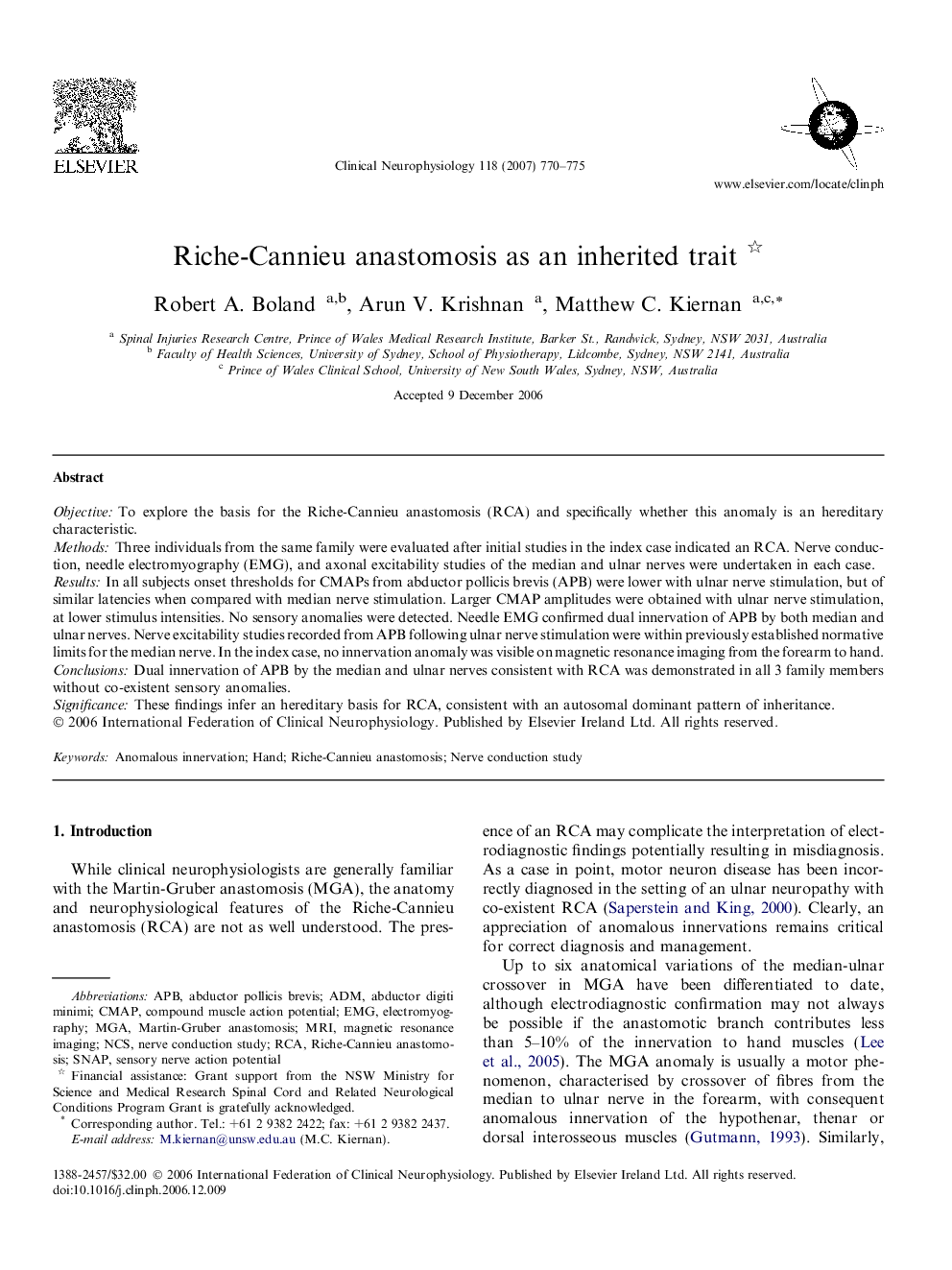| Article ID | Journal | Published Year | Pages | File Type |
|---|---|---|---|---|
| 3047905 | Clinical Neurophysiology | 2007 | 6 Pages |
ObjectiveTo explore the basis for the Riche-Cannieu anastomosis (RCA) and specifically whether this anomaly is an hereditary characteristic.MethodsThree individuals from the same family were evaluated after initial studies in the index case indicated an RCA. Nerve conduction, needle electromyography (EMG), and axonal excitability studies of the median and ulnar nerves were undertaken in each case.ResultsIn all subjects onset thresholds for CMAPs from abductor pollicis brevis (APB) were lower with ulnar nerve stimulation, but of similar latencies when compared with median nerve stimulation. Larger CMAP amplitudes were obtained with ulnar nerve stimulation, at lower stimulus intensities. No sensory anomalies were detected. Needle EMG confirmed dual innervation of APB by both median and ulnar nerves. Nerve excitability studies recorded from APB following ulnar nerve stimulation were within previously established normative limits for the median nerve. In the index case, no innervation anomaly was visible on magnetic resonance imaging from the forearm to hand.ConclusionsDual innervation of APB by the median and ulnar nerves consistent with RCA was demonstrated in all 3 family members without co-existent sensory anomalies.SignificanceThese findings infer an hereditary basis for RCA, consistent with an autosomal dominant pattern of inheritance.
